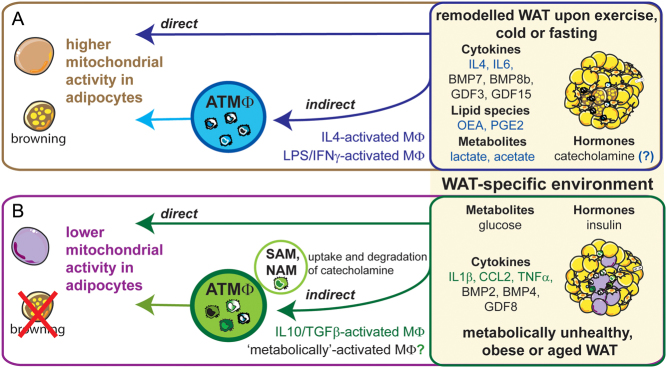Figure 4.
Control of adipocyte energy metabolism. In the WAT-specific environment (yellow background), multiple cytokines/chemokines, metabolites, lipid species and hormones from diverse cell types within WAT and/or circulation can exert either positive (upper box, A) or negative (lower box, B) effects on WAT metabolism. These factors control mitochondrial function of (pre-)adipocytes either directly and/or indirectly by first affecting the ATMΦ secretion profile. Notably, the composition of released factors depends on MΦ activation (known for factors written in blue/green). Depending on the TGFβ superfamily (BMPs and GDFs), WAT metabolism is either promoted or suppressed. A recently identified but controversially discussed mechanism of MΦ invoked browning and enhanced WAT metabolism is the secretion of catecholamine by IL4-activated MΦ during cold and exercise (upper box, A). On the contrary, NAMs/SAMs (lower box, B), which represent MΦ in close proximity of neurons/axons, may reduce local catecholamine levels and thus suppress mitochondrial function of adipocytes with age and obesity.

 This work is licensed under a
This work is licensed under a 